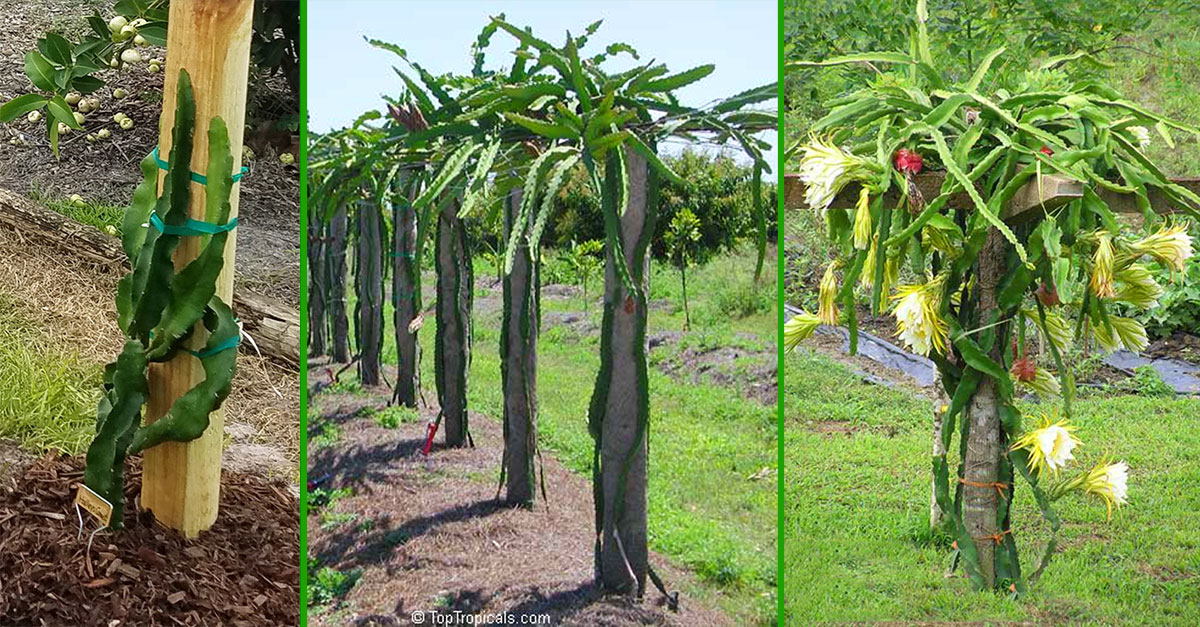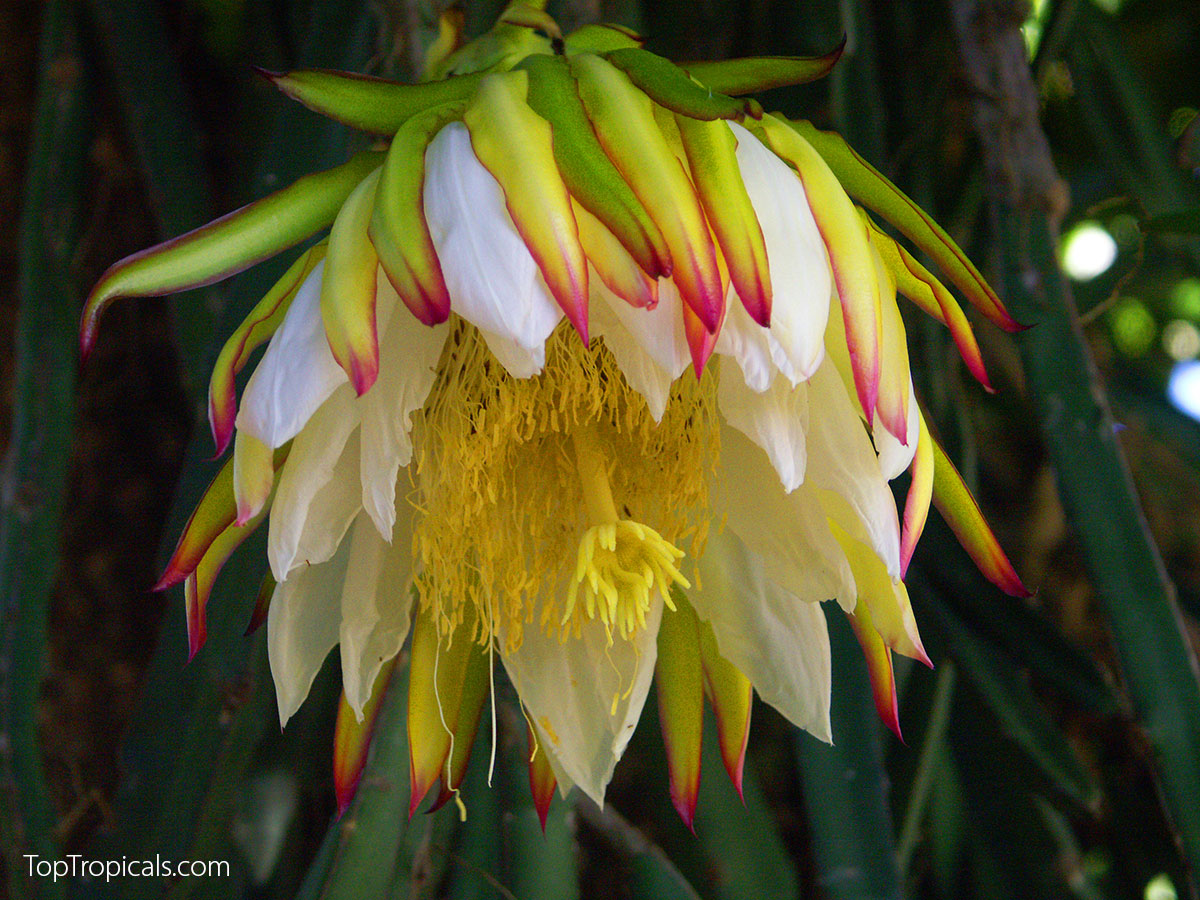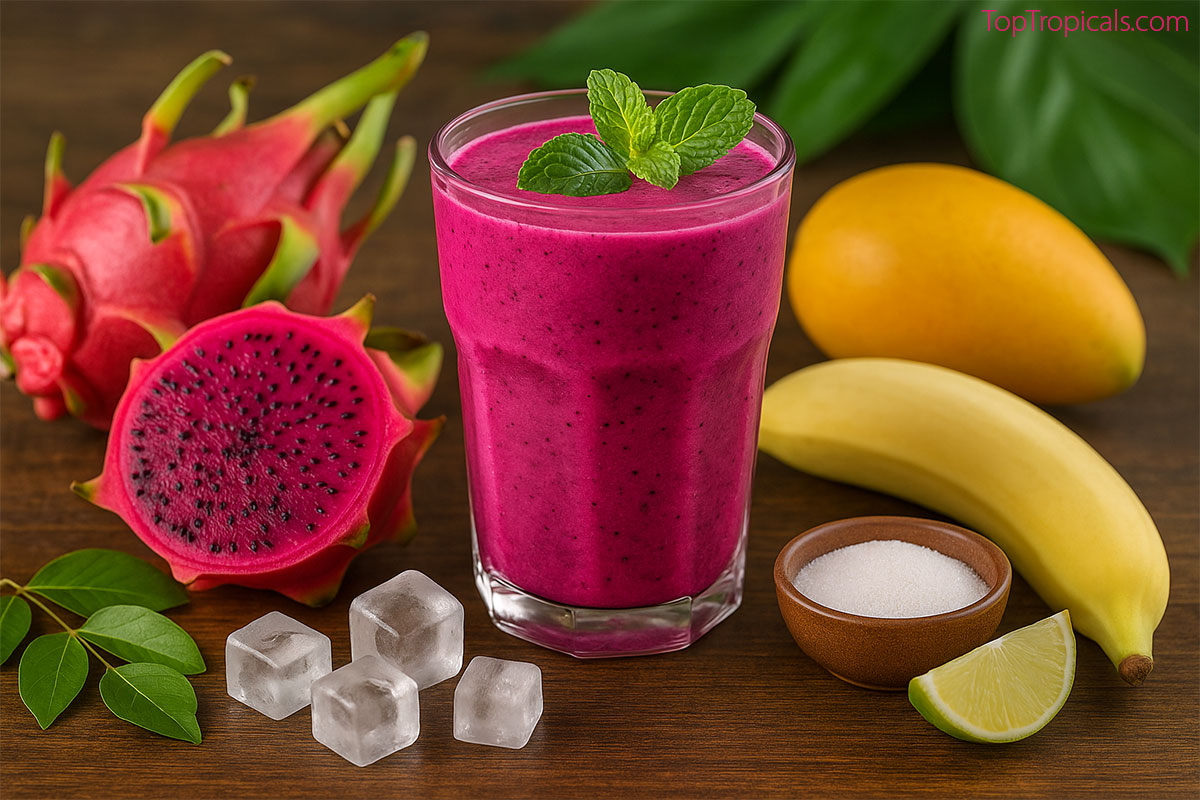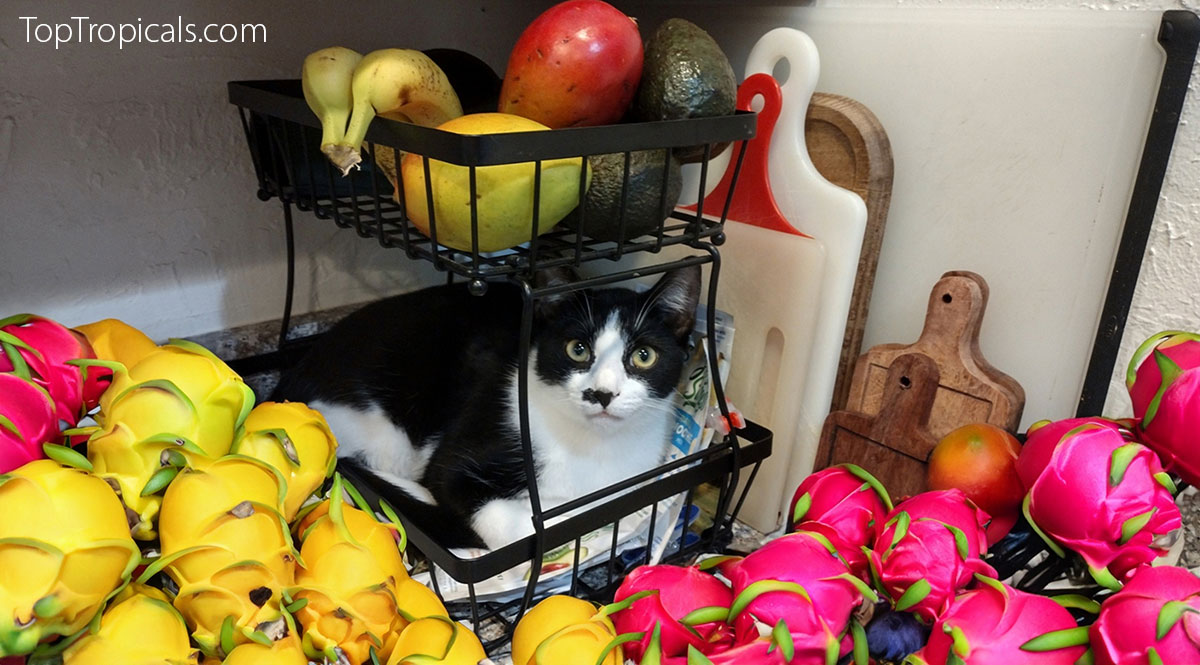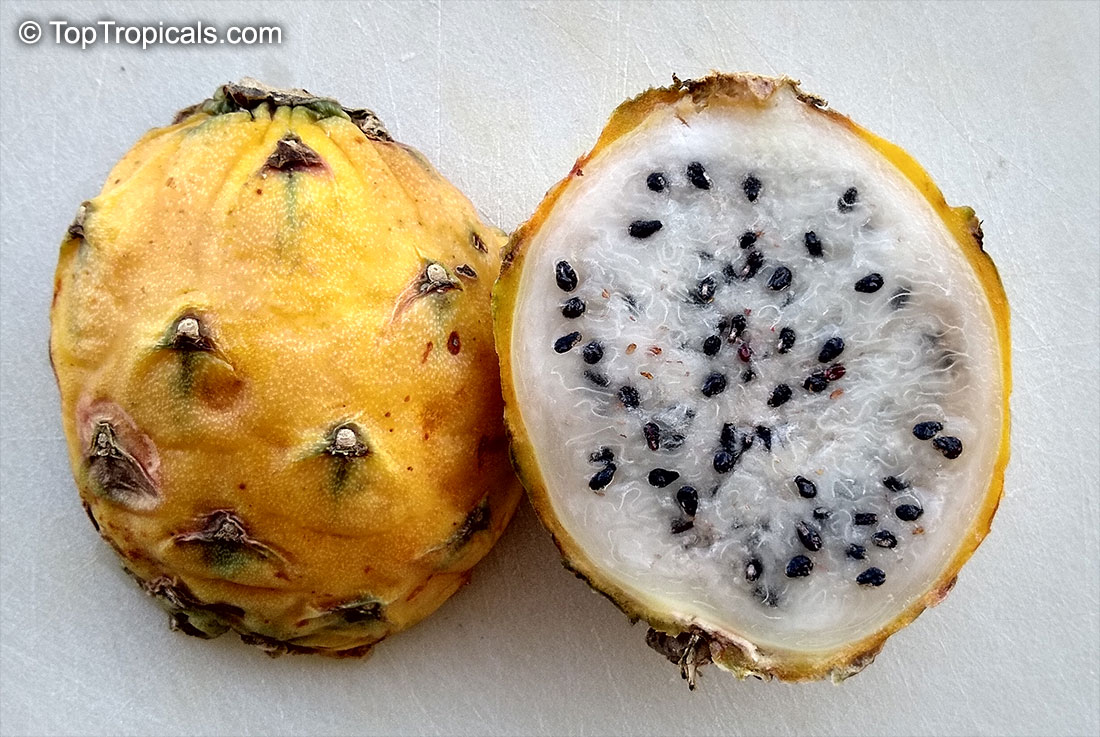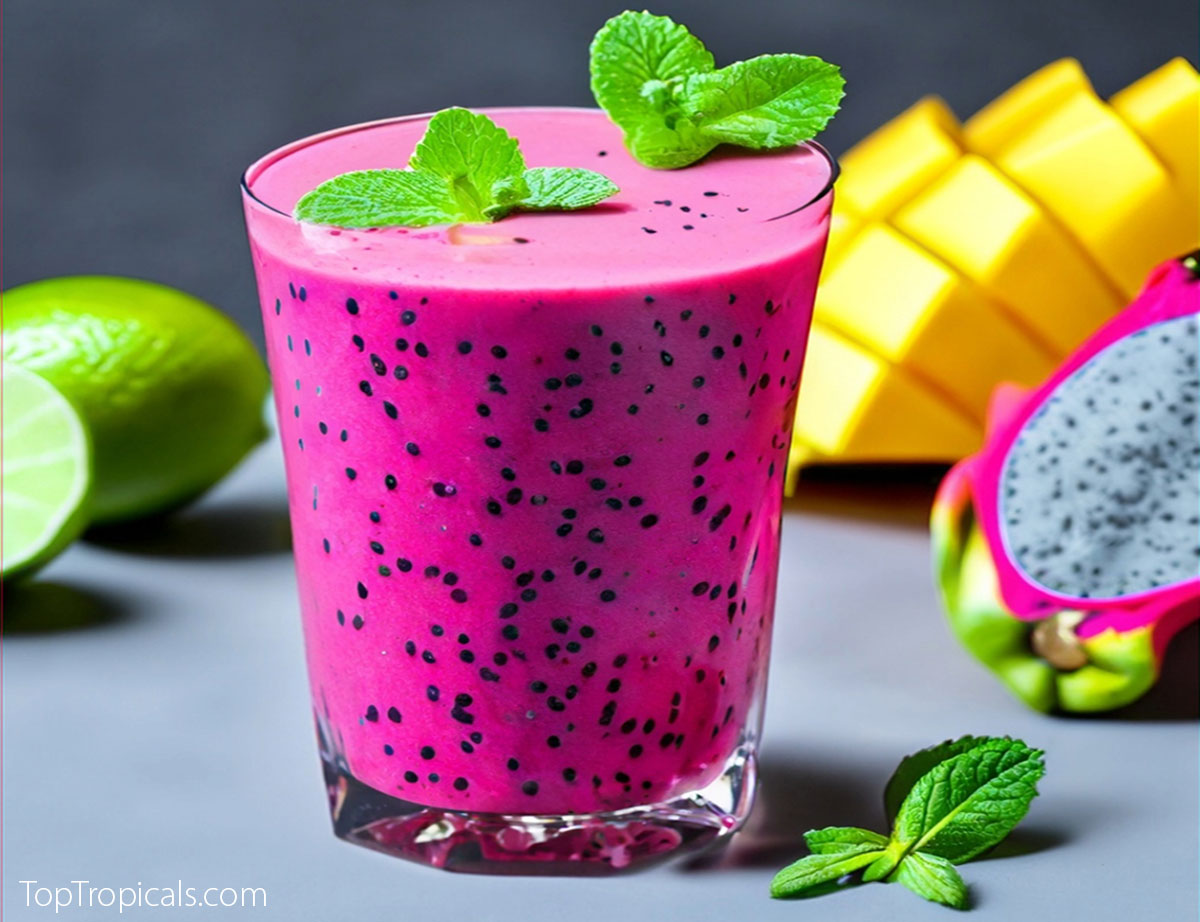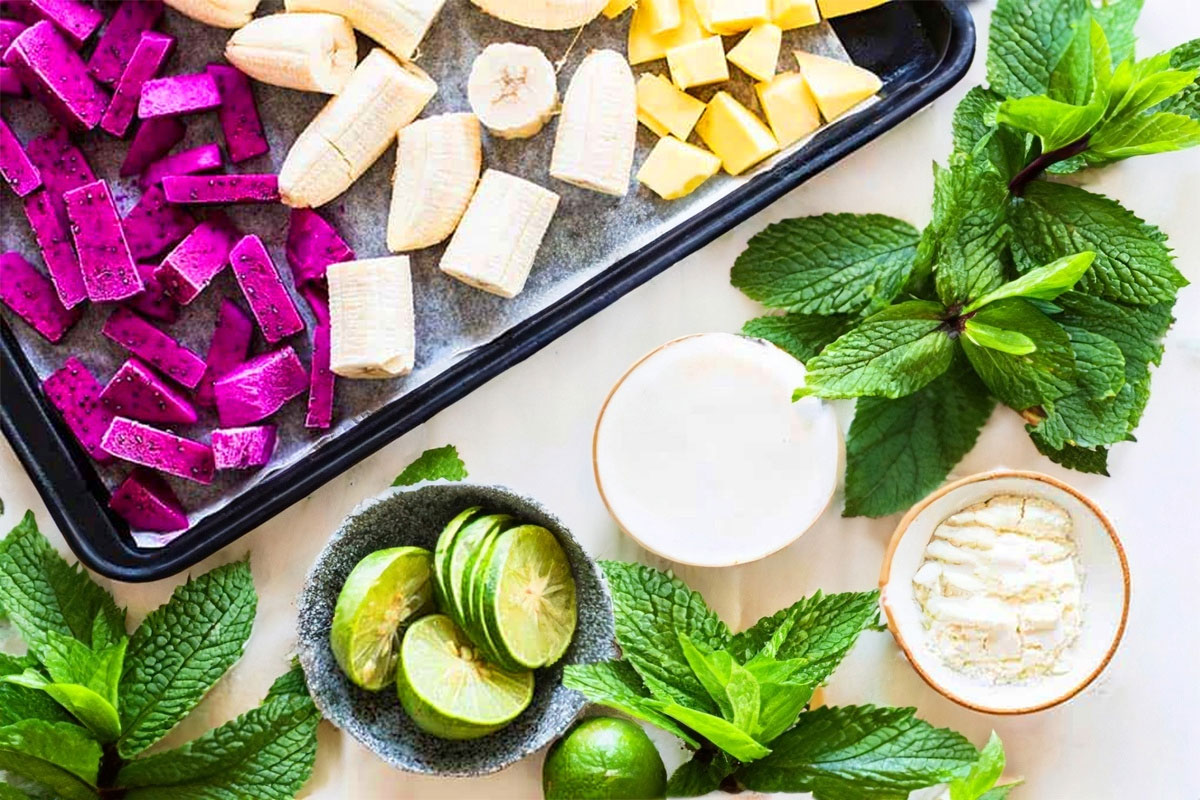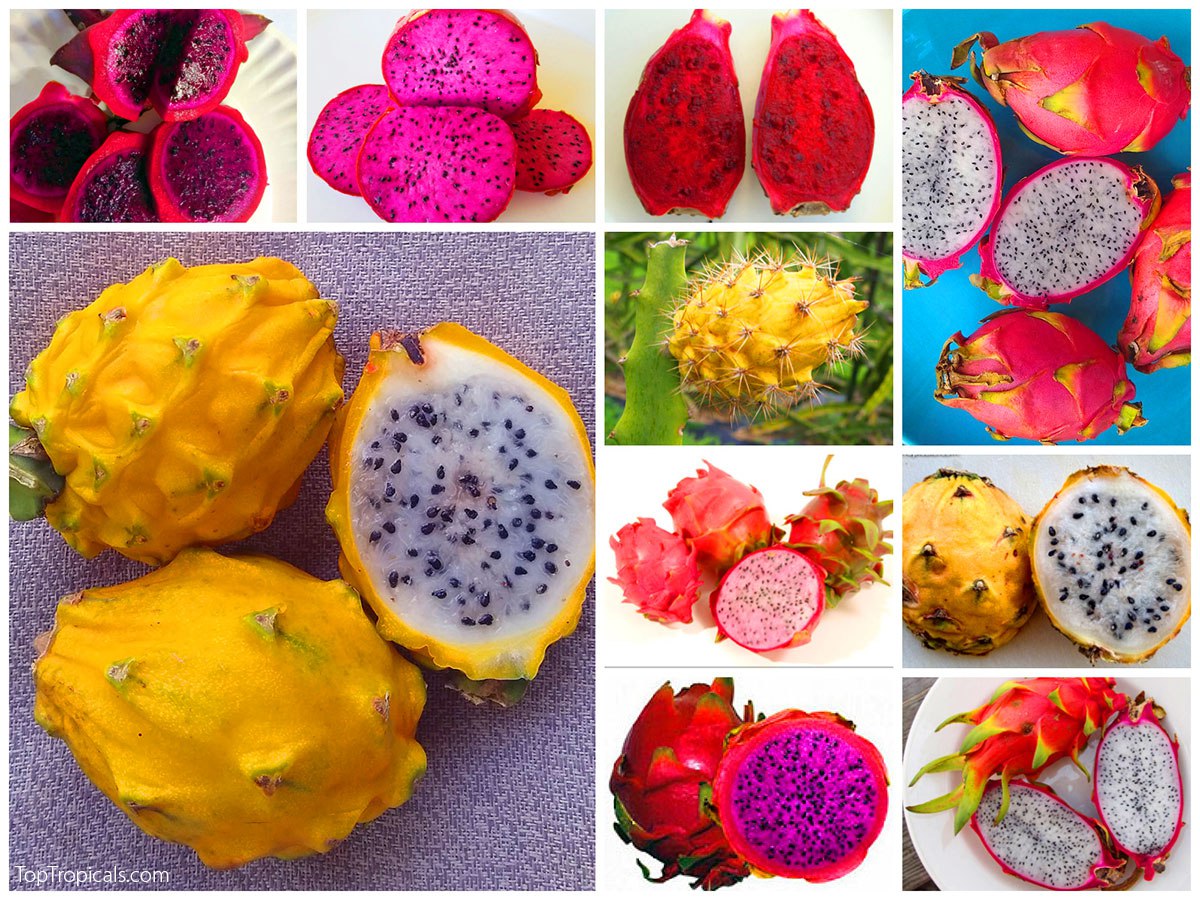Garden Blog - Top Tropicals
Date:
Anthurium Collector Set
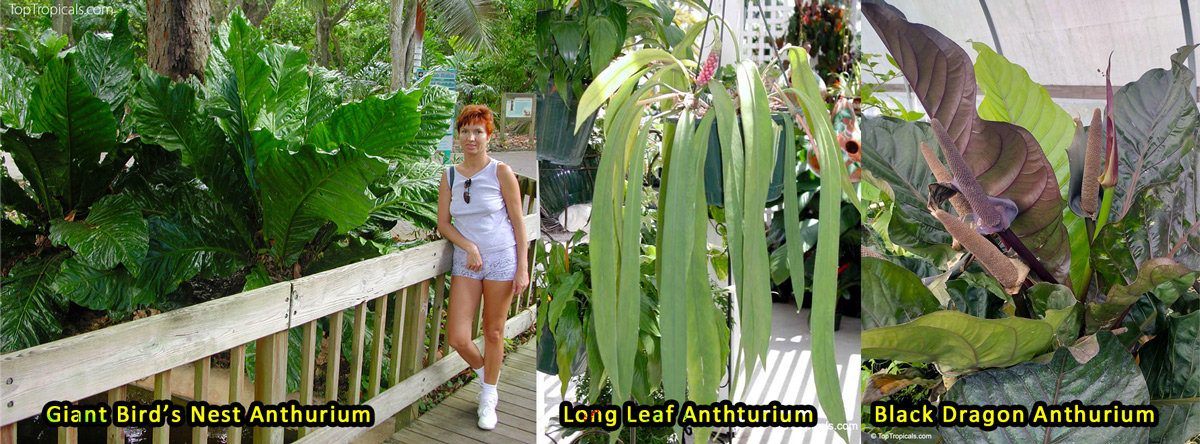
These aren't your typical tropicals - they're collector-grade Anthuriums grown for foliage and texture. Each one brings something different, but they all thrive in the same kind of setting: shade or filtered light, warmth, and humidity. Perfect for growing in containers indoors or out.
 Anthurium Black Dragon
Anthurium Black Dragon
This is the most dramatic of the trio. Upright, leathery leaves shift from dark green to nearly black depending on light. Instead of bright flowers, it produces a dark brown spadix and glowing red berries. A hybrid not found in the wild, it's grown from seed - no two are exactly alike.
- Best for: Indoor focal plant, shaded patio, black ceramic pot
- Height: 2–4 ft in container
- Texture: Thick, architectural leaves
- Highlight: Color shifts with light intensity
Read more about Black Dragon Anthurium
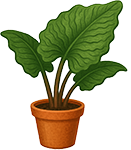 Anthurium hookeri – Giant Bird's
Nest
Anthurium hookeri – Giant Bird's
Nest
This one's about scale. Broad, crinkled leaves with a cardboard-like texture form a bold rosette. It can get huge with time - up to 6 feet across. Perfect for gardeners who want the "instant jungle" look.
- Best for: Shaded garden, large pots on porches
- Height: Up to 5 ft; width even more
- Texture: Wrinkled and leathery
- Highlight: Bright red berries in maturity
Buy Giant Bird's Nest Anthurium
Read more about Giant Bird's Nest Anthurium
 Anthurium vittariifolium – Long
Leaf Anthurium
Anthurium vittariifolium – Long
Leaf Anthurium
Graceful and rare, this species sends out narrow strap-like leaves that can reach 5–6 ft long. Ideal for hanging baskets or mounting. Bonus: it produces small pink fruit against deep green foliage.
- Best for: Hanging displays, vertical planters, bright bathrooms
- Height: Leaf length, not upright height - up to 6 ft
- Texture: Smooth, ribbon-like
- Highlight: Cascading growth and color contrast
Read more about Long Leaf Anthurium
✅ How to Care for Anthuriums
- Light: Bright, indirect light is best. Avoid direct sun, especially mid-day. These plants evolved in rainforest understory - think "dappled light under trees."
- Water: Keep the soil lightly moist but not soggy. Let the top inch dry before watering. They hate wet feet.
- Humidity: These are tropicals - they'll do fine in 50-60% humidity, but thrive at 70%+. Use pebble trays or place near other plants. Bathrooms with windows work great.
- Soil: Use an airy mix: orchid bark + perlite + peat or coco coir. Drainage is key. Never use plain potting soil.
- Fertilizer: Feed with SUNSHINE Robusta every 2–4 weeks during warm seasons. It's formulated for aroids and won't burn roots.
- Potting: Use shallow, wide containers. Repot only every 2–3 years, or when roots crowd the pot. They don't like frequent disruption.
- Temperature: Ideal: 65–85 F. Short dips to the 30s F are tolerated by mature plants, but avoid cold drafts.
Date:
 Dragon Fruit Plant Care – Tips
from the Garden Expert
Dragon Fruit Plant Care – Tips
from the Garden Expert
Dragon fruit is one of those plants that look exotic but are surprisingly easy once you know the basics. Here is what works best in the garden:
- Soil: They hate wet feet. A sandy, fast-draining soilless-mix is your friend. If water sits around the roots, rot comes fast.
- Watering: Deep watering is better than frequent sips. Let the soil dry between waterings. In rainy season they cope well, but in pots you need to be careful.
- Sunlight: Full sun is great, but in very hot places a touch of afternoon shade keeps them happy.
- Support: They are natural climbers. A wooden post, concrete pole, or trellis will give them something to grab and makes harvest easier.
- Fertilizer: Feed lightly but often. A gentle liquid like Sunshine C-Cibus liquid booster with every watering, or Green Magic controlled release fertilizer every 5-6 months. It encourages strong roots, lush growth, and lots of flowers.
- Pruning: Trim off tangled or weak stems. This guides energy into strong branches that will flower and fruit.
Think of it as training a cactus vine into a small tree. Once it settles in, it almost takes care of itself — and pays back with fruit you can’t buy in stores.
🌱 Dragon Fruit Plant Care – Outdoors and Indoors
Outdoors: Dragon fruit thrives in USDA Zones 10–11 year-round. In warm regions like Florida, Texas, California, and Hawaii, you can grow it outside in the ground. Give it fast-draining soil, full sun with a little afternoon shade in the hottest months, and a sturdy trellis or post to climb. Deep watering with drying periods in between keeps roots healthy. A yearly pruning shapes the plant and boosts flowering.
Indoors or Patio Pots: Gardeners in cooler zones can still enjoy dragon fruit in containers. Use a large pot with sandy, well-draining mix or soilless-mix and a pole for support. Place the pot in the brightest spot — a greenhouse, sunroom, or patio that gets 6+ hours of light daily. Move pots inside when temperatures drop below 40F. Even indoors, a healthy plant can bloom and fruit if it has enough light and warmth.
❓ Dragon Fruit FAQ
How soon will a dragon fruit start producing?
Cuttings can flower and fruit in as little as 2–3 years. Seed-grown plants take longer, often 4–6 years. Large developed specimens can start flowering and fruiting within a year or even the same season.
Do I need more than one plant for pollination?
Some varieties are self-fertile, others need a second plant for cross-pollination. Even self-fertile types usually set more fruit with a partner nearby.
How big do they get?
In the ground, dragon fruit can climb 15–20 ft if you let it. With pruning and a trellis, you can keep it shaped like a small tree, 6–8 ft tall.
Can I grow it in a pot?
Yes. A large container with sandy mix or soilless-mix and a pole for climbing works well. Indoors it will need bright light or a grow lamp.
What does a dragon fruit taste like?
Sweet and juicy, like a blend of blackberry and raspberry. Varieties differ: flesh can be white, pink, deep red, or purple, wrapped in skins of red, pink, or yellow. White flesh is mild and refreshing, red flesh is sweeter, and yellow flesh is the sweetest with a honey-pineapple flavor.
What zones can I grow dragon fruit outside?
USDA Zones 10–11 are best for year-round outdoor planting. In cooler areas, grow it in containers and bring inside for winter.
How often should I water?
Deep water, then let the soil dry. Too much water causes root rot. Think “desert cactus with a taste for rain.”
Is dragon fruit easy to grow?
Yes. Pitayas grow like cactus trees on strong supports, but they are easy to care for — little water, sun or semi-shade, and they thrive.
How long do they live?
A healthy dragon fruit cactus can produce for 10 years or more with proper care.
What are the health benefits?
Dragon fruit is high in fiber, supports digestion, and is low in calories. It is rich in antioxidants and vitamin C, making it good for immunity and overall wellness. Many gardeners enjoy it as a healthy snack or in smoothies.
Date:
🐲 The taste you will never forget
If you only know dragon fruit from the grocery store, you probably think it looks pretty but tastes bland. That is because most commercial fruit is picked early, shipped far, and loses its sweetness. The truth? Homegrown dragon fruit is juicy, sweet, and full of flavor. The best of all is the yellow variety, Palora (Selenicereus megalanthus), a cactus fruit from Ecuador that bursts with tropical taste.
🌵 Pitaya or Dragon fruit – what is the difference?
Both names describe the same climbing cactus. In Latin America it is called Pitaya, while Asia and English speakers say Dragon fruit. There are three main kinds:
- Red skin, white flesh (Hylocereus undatus)
- Red skin, red flesh (Hylocereus costaricensis)
- Red skin, purple or pink flesh (Hylocereus x costaricensis hybrids)
- Yellow skin, white flesh (Selenicereus megalanthus)
Some hybrids give purple or magenta flesh. All are beautiful, all are easy to grow at home.
⚡️ Do red, white, and yellow taste different?
Yes. White types are mild and refreshing. Reds are sweeter and juicier. Yellows are the sweetest of all.
⚡️ Flowers from a fairy tale
Dragon fruit flowers are among the most spectacular in the plant world. They open at night, glowing under moonlight, with pale petals and a sweet fragrance. Each flower can be a foot wide. Seeing one bloom feels like stepping into another world.
⚡️ Top Dragon Fruit Health Benefits
- High in fiber for digestion and gut health
- Low in calories but full of vitamins
- Great for weight management
- Adds color and freshness to smoothies and salads
🍹 Dragon Fruit Smoothie recipe
Blend together:
- 2 dragon fruits, peeled
- 1/2 cup mango pulp
- 1 banana
- 1 cup milk of your choice
- 2 tbsp sugar
- 1/2 tsp lime juice
- Ice cubes to taste
Top with mint for a refreshing tropical treat.
Watch Dragon Fruit short videos:
💲 Special Offer – 25% off Dragon Fruit Pitaya Plants!
Get 25% OFF Pitaya plants with code
DRAGON2025
Min order $100. Excluding S/H, valid online only, cannot be combined with other offers.
Hurry, offer expires September 29, 2025!
Why every collector wants the Gothic Black Dragon Anthurium
Black Dragon Anthurium
- 🌑 A living shadow
- 🌑 It changes color with light
- 🌑 Its spadix and spathe are weapons of style
- 🌑 Tropical but tough
- 🌑 A collector's hybrid, not found in the wild
Anthurium Black Dragon is one of the most prized centerpieces of the Top Tropicals plant collection. This rare and exotic hybrid is celebrated for its deep, dark foliage that looks as if it were painted with charcoal or ink. It belongs to the coveted "dark foliage" group of anthuriums - a favorite among collectors for its dramatic, gothic elegance.
This plant changes color like magic! What sets Black Dragon apart is its ability to transform. In bright filtered light, the leaves darken dramatically - almost jet black. But in lower light, they fade to a mysterious greenish-maroon. It's like having two plants in one, depending on how you position it.
Unlike many anthuriums that flaunt bright reds or whites, Black Dragon keeps it sleek and sinister with a brown spadix and dark-brown spathe - adding a sense of surreal drama when it flowers. But wait to see the real show when is sets fruit - cascades of bright red berries!
Though exotic-looking, it's surprisingly resilient. With the right humidity and warmth (typical of most anthuriums), it's a slow but steady grower - ideal for collectors who want something dramatic yet manageable indoors.
Black Dragon is likely a man-made hybrid created by crossbreeding dark-leaved species like Anthurium watermaliense or Anthurium forgetii. It doesn’t grow in the wild, which makes it even more of a sought-after trophy in aroids circles.
🛒 Get your own Black Dragon
📚 Learn more:
The most unique plant in your collection
#Container_Garden #Shade_Garden #Nature_Wonders
🟢 Join 👉 TopTropicals
Date:
What to do with a Dragon fruit?
Q: What can you do with Dragon Fruit? I bought some from the grocery store, but they don't have much flavor.
A: Dragon fruit, or Pitaya, comes in many varieties that differ in flavor, sweetness, and texture. In the store they usually carry simple varieties that are easy to ship and store but have very little flavor. This is why we prefer grow our own Dragon Fruit, same way like we grow many varieties of Mango - to enjoy their excellent flavors that you can't find in a store. Our favorite is the Yellow Dragon Fruit that is not only the sweetest of all but also have the best flavor, with pineapple-mango hint. It is best enjoyed fresh out of hand.
Yellow Dragon Fruit - Selenicereus megalanthus Equador Golden
Dragon Fruit Smoothie: simple and tasty recipe
Dragon fruit, regardless of variety, makes excellent smoothies. A perfect Dragon Fruit Smoothie can be made with a creamy blend of dragon fruit, mango, and banana. The tropical flavor is played up with a squeeze of fresh lime.
Ingredients
Mix in a blender:
2 dragon fruit, peeled
1/2 cup of mango pulp
- banana
1 cup of milk of your preference - tbsp sugar
1/2 tsp Lime juce
Some Ice
-
Mint for decoration
Dragon fruit contains lots of of nutrients, most notably high vitamin C and iron. Its low calorie content helps give it superfood status because of high nutrient density. Try it today, even from the grocery store! Although these fruit can be quite costly. So, plant your own Dragon Fruit variety collection and enjoy an endless palette of deliciousness!
When do I get the fruit from my Dragon Fruit?
Dragon fruit varieties
- 🌵Dragon Fruit (Pitaya) is one of the most rewarding exotic fruits to grow. Sweet pulp, striking looks, and plenty of health benefits make it a favorite. You'll see it in three main types: white-fleshed (Hylocereus undatus), red-fleshed (Hylocereus costaricensis), and yellow-skinned (Hylocereus, or Selenicereus megalanthus).
- 🌵Don't want to wait years for fruit? Here’s the good news: unlike many tropical trees that test your patience, dragon fruit is a fast-fruiting, easy-going cactus. With the right care, you can harvest in just 1-2 years from a cutting - or even the same season if you plant a well-established specimen.
- 🌵 How to get Dragon Fruit faster
- ▫️Give it strong support - trellis, fence, or post. This cactus loves to climb.
- ▫️Full sun and good drainage - sandy or well-draining soil works best.
- ▫️Smart watering - water deeply in hot weather, then let the soil dry. Dragon fruit loves water during active summer growth, but remember it's still a cactus - don’t keep soil soggy.
- ▫️Pollination matters - flowers open at night. Some varieties are self-fertile, but planting a few different types boosts fruit set. This is why it helps to keep several varieties close together.
- ▫️Feed well - use organic liquid fertilizers like Sunshine Boosters C-Cibus with every watering, or Green Magic controlled-release fertilizer every 6 months.
With these steps, dragon fruit quickly rewards you with flowers, followed by colorful, delicious fruit. Few exotics are this easy - or this fast!
🛒 Start your fast-growing Dragon Fruit production
📚 Learn more:
- · Pitaya vs Dragon fruit - what is the difference and how to grow it. Varieties.
- · The secret to abundant dragon fruit harvests
- · How to grow Dragon Fruit from a cutting - Quick Guide
- · How to grow Dragon Fruit 📱
- · Planting your own Dragon Fruit plantation
- · Do-It-Yourself Support Structure for Dragon Fruit
- · Grow Your Own Exotic Dragon Fruit Garden
- · Top 10 fruit you'll ever need for your health benefits: Dragon fruit
- · What does Dragon Fruit Flower look like?
- · Why you need to grow your own dragon fruit
- · Do red, white and yellow Dragon fruit taste differently?
- · What to do with a lot of Dragon Fruit
#Food_Forest #How_to #Dragon_Fruit
🟢 Join 👉 TopTropicals
Fun Fact: King Anthurium
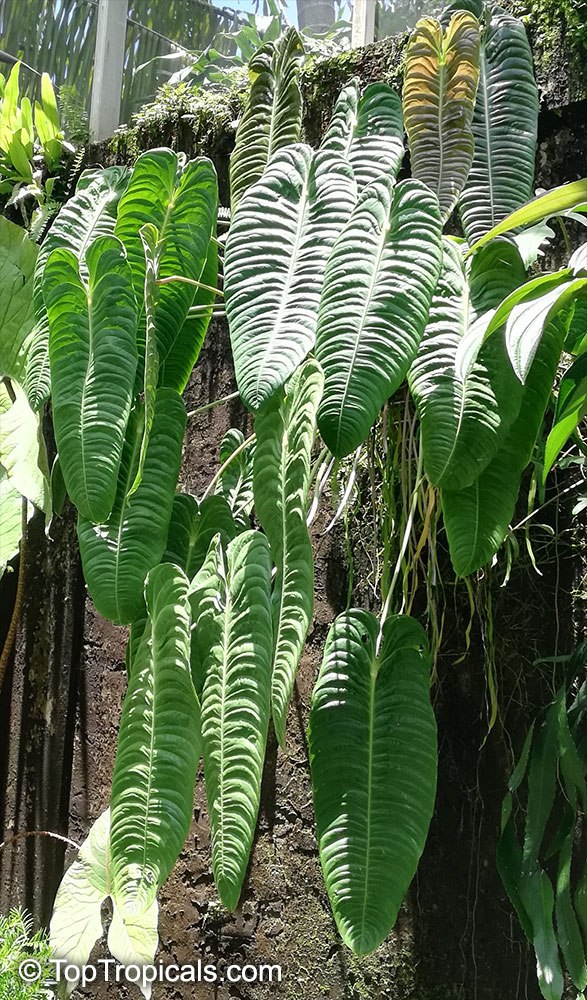
Anthurium veitchii - King Anthurium
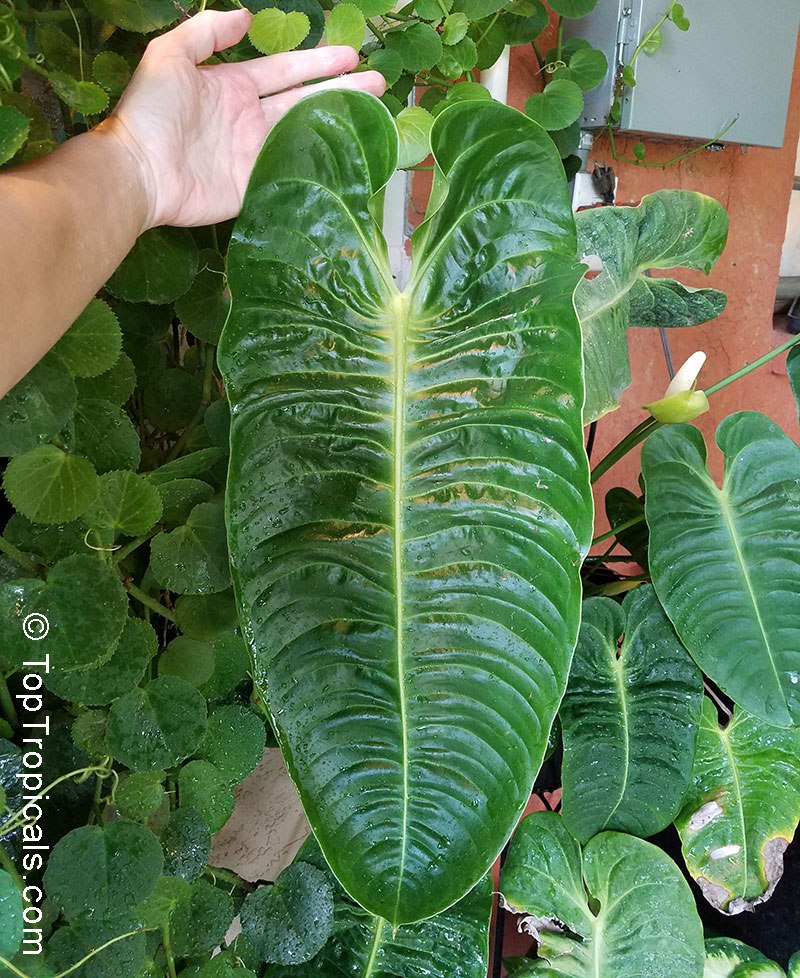
Anthurium veitchii - King Anthurium
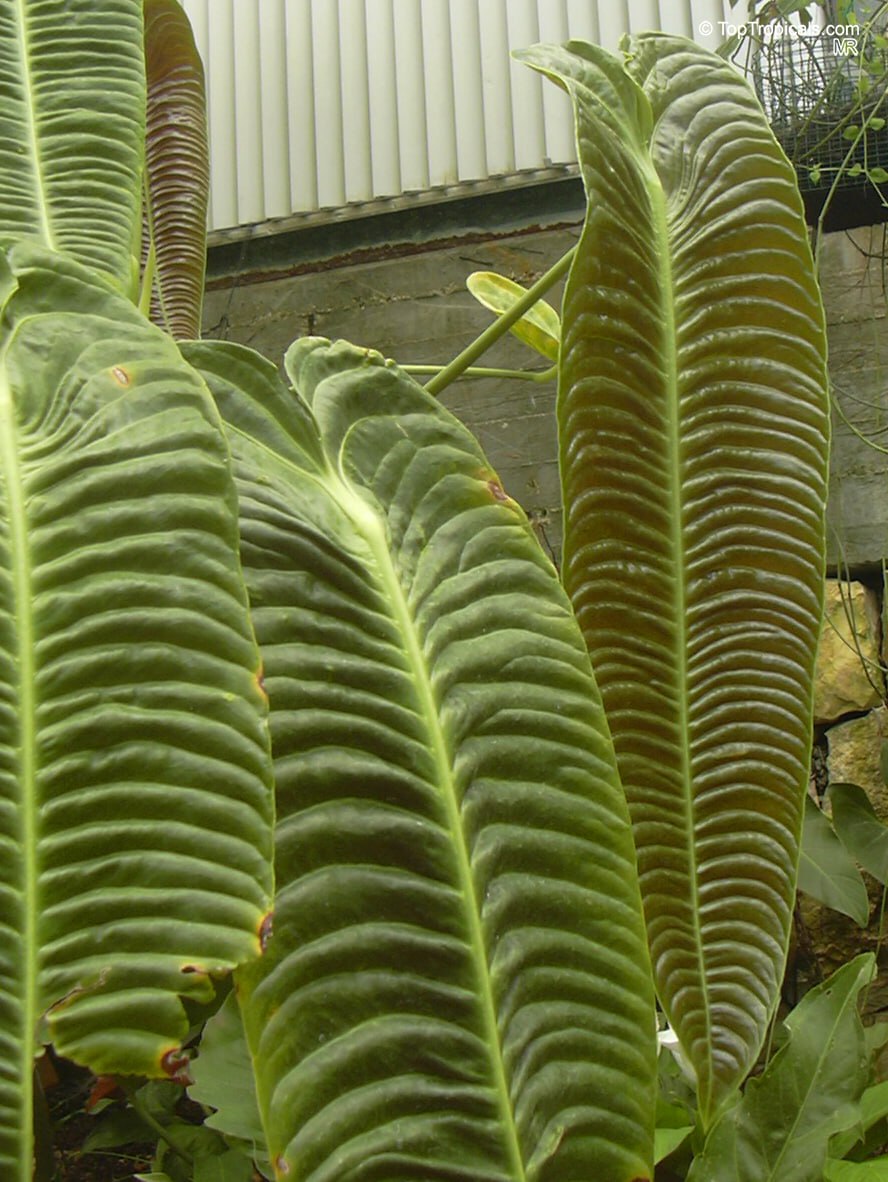
Anthurium veitchii - King Anthurium
🔖 Crowning its title, Anthurium veitchii - King Anthurium - boasts leaves up to 3 feet long! Majestic houseplant! Very hard to find, rare plant.
#Fun_Facts #Nature_Wonders #Container_Garden #Shade_Garden
🛒 Order Anthurium veitchii
🔴 Join 👉 TopTropicals
Fun Fact: Long Leaf Anthurium
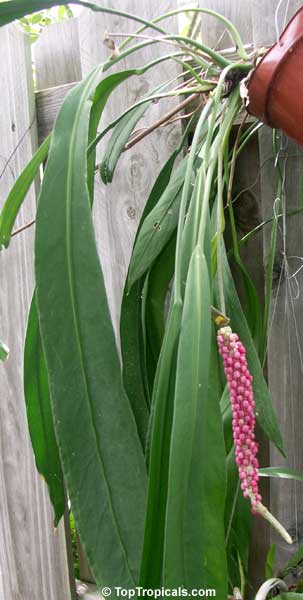
Anthurium vittariifolium - Long Leaf Anthurium
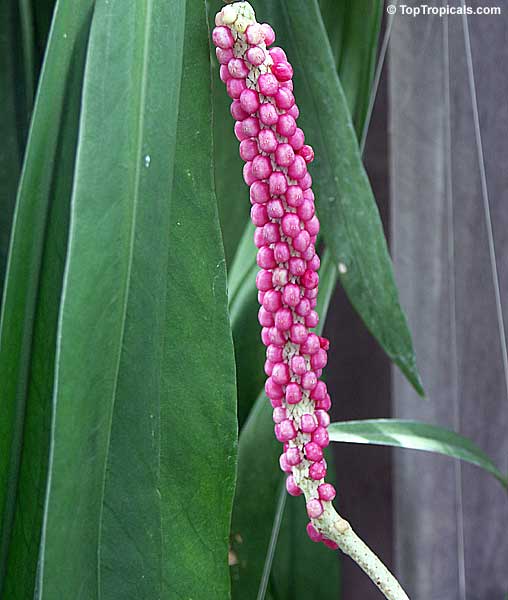
Anthurium vittariifolium - Long Leaf Anthurium
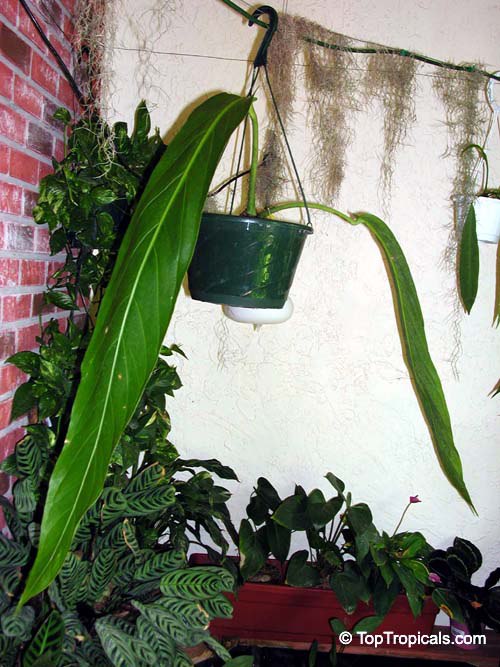
Anthurium vittariifolium - Long Leaf Anthurium
💎 Anthurium vittariifolium - Long Leaf Anthurium. This rare rainforest gem flaunts leaves that can stretch up to 6 feet long, creating a stunning cascading effect when grown in hanging baskets. Plus, it surprises with bright pink, showy fruits that add a vibrant splash of color to its dramatic foliage!
#Fun_Facts #Nature_Wonders #Container_Garden #Shade_Garden
🛒 Order Anthurium veitchii
🔴 Join 👉 TopTropicals
Pitaya vs Dragon fruit - what is the difference and how to grow it?
🍉 Pitaya and Dragon Fruit are the same plant!
🍉 How to grow Dragon Fruit
Both names refer to climbing cacti in the genus Hylocereus. The word pitaya is more common in Latin America, while dragon fruit is the name used in Asia and English-speaking countries. They come in different types: white-fleshed (Hylocereus undatus), red-fleshed (Hylocereus costaricensis), and yellow-skinned (Hylocereus, or Selenicereus megalanthus). All share the same growth habit and care needs. Pitaya or dragon fruit - whichever name you use, it's one of the easiest exotic fruits to grow at home.
- ▫️Get a desired variety or start from a cutting - let the cut end dry for a few days before planting to prevent rot.
- ▫️Plant in well-draining soil with lots of sun.
- ▫️Give it a strong support to climb on - it's a vining cactus.
- ▫️Water deeply but let the soil dry between waterings.
- ▫️Flowers open at night and need pollination - some types are self-fertile, others need cross-pollination.
- ▫️With care, you can enjoy fruit in 1-2 years. Remember to ferilize!
🍉 Dragon fruit varieties
🔴 ⚪️ Red skin, white flesh (Hylocereus undatus) - The most popular type, and the biggest fruit. Mildly sweet, refreshing, and often compared to a kiwi crossed with a pear.
🔴🔴 Red skin, red flesh (Hylocereus costaricensis) - Sweeter, juicier, and more intense in flavor. The deep red juice can stain, but it’s loaded with antioxidants.
🔴🟣 Red flesh, purple/magenta flesh (Hylocereus x costaricensis) - Hybrids, usually between red and white varieties.
Varieties: David Bowie, Delight, Hana, Lake Atitlan, Seoul Kitchen, Vietnamese Jaina, Hana
Varieties: American Beauty, Bloody Mary, Eureka Red, Costa Rican Sunset, Mac Edwin, Halleys Comet, Mac Edwin, Makisupa, Mega Red, Physical Graffiti, Sweet Red
Varieties: Cosmic Charlie, Edgar's Baby, Halleys Comet, Natural Mystic, Physical Graffiti, Purple Haze, Tricia, Voodoo Child, Zamorano
🟡⚪️ Yellow skin, white flesh (Hylocereus, or Selenicereus megalanthus) - Smaller fruit, but the sweetest of all. Crisp, juicy, and tropical with notes of pineapple or honey.
Varieties: Amarilla (Kirin), Colimbiana, Godlen Dragon, Palora, Thai Gold (Hawaiian)
Each type looks stunning and tastes slightly different, but all are easy to grow once you give them sun, support, and patience.
🛒 Explore and collect Dragon Fruit varieties
📚 Learn more:
- · How to grow Dragon Fruit from a cutting - Quick Guide
- · How to grow Dragon Fruit 📱
- · Planting your own Dragon Fruit plantation
- · Do-It-Yourself Support Structure for Dragon Fruit
- · Grow Your Own Exotic Dragon Fruit Garden
- · Top 10 fruit you'll ever need for your health benefits: Dragon fruit
- · What does Dragon Fruit Flower look like?
- · Why you need to grow your own dragon fruit
- · Do red, white and yellow Dragon fruit taste differently?
- · What to do with a lot of Dragon Fruit
#Food_Forest #How_to #Dragon_Fruit
🟢 Join 👉 TopTropicals
Anthurium with leaves longer than you!
Anthurium vittariifolium- Long Leaf Anthurium
- 🌿 Ever seen an Anthurium with leaves longer than you are tall? Anthurium vittariifolium - Long Leaf Anthurium - is a true rainforest treasure from South America. Its strap-like leaves can reach an incredible 6 feet in length but stay only about 2 inches wide, creating elegant green ribbons that drape down like a waterfall.
- 🌿 Grow it in a hanging basket and you’ll get a cascading curtain of foliage that instantly turns any space into a jungle hideaway.
- 🌿 As if the leaves weren’t enough, this rare beauty produces clusters of bright pink berries that pop against the deep green leaves, adding an unexpected splash of color!
- 🌿 It's rare, it's dramatic, and it's the kind of plant that makes people stop and ask, “What on earth is THAT?”
🛒 Grow the 6-foot leaf Anthurium
📚 Learn more:
#Nature_Wonders #Container_Garden #Shade_Garden
🟢 Join 👉 TopTropicals
